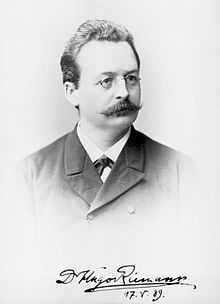Counter parallel


In music theory, the counter parallel is terminology used in German theory derived mainly from Hugo Riemann to refer to (US:) relative (German: parallel) diatonic functions and is abbreviated Tcp in major and tCp in minor (Tkp respectively tKp in Riemann's diction). The chord can be seen as the "tonic parallel reversed" and is in a major key the same chord as the dominant parallel (Dp) and in a minor key equal to the subdominant parallel (sP); yet, it has another function. According to Riemann the chord is derived through Leittonwechselklänge (German: "leading-tone contrast chords").
For example, Am is the tonic parallel of C, thus, Em is the counter parallel of C. The usual parallel chord in a major key is a minor third below the root and the counter parallel is a major third above. In a minor key the intervals are reversed: the tonic parallel (e.g. Eb in Cm) is a minor third above, and the counter parallel (e.g. Ab in Cm) is a major third below. Both the parallel and the counter parallel have two notes in common with the tonic (Am and C share C & E; Em and C share E & G).
A chord should be analysed as a Tcp rather than Dp or sP particularly at cadential points, for example at an interrupted cadence, where it substitutes the tonic. It is most easily recognised in a minor key since it creates an ascending semitone step at the end of the cadence by moving from the major dominant chord to the minor counter parallel:
Ex. t - s - D - tCp Em - Am - B - C
where C is located a major third below Em
Ex. T - S - D - tCp F - Bb - C - Db
where Db is located a major third below the minor tonic Fm
In four-part harmony, the Tcp usually has a doubled third to avoid consecutive fifths or octaves. This further emphasises its coherency with the tonic, since the third of the minor key counter parallel is the same as the tonic root which thus is doubled.
See also
External links
- "Chord Functions", NiklasAndreasson.se.
| ||||||||||







